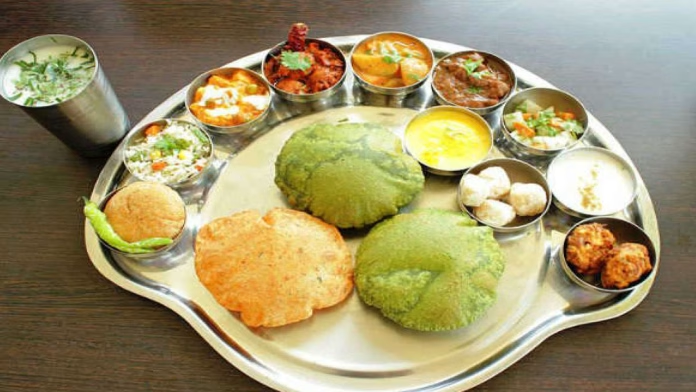Navratri is a Hindu festival celebrated for nine days and nights in honor of the divine feminine goddesses Durga, Lakshmi, and Saraswati. During this auspicious festival, devotees observe fasting and perform religious rituals to seek the blessings of the goddesses. Navratri fasting is one of the most important aspects of the festival, and devotees follow strict dietary restrictions during this period.
Navratri is a significant festival for Hindus as it celebrates the victory of good over evil. This nine-day festival is dedicated to the worship of Maa Durga and her nine avatars. While there are four Navratri’s in a year, Chaitra Navratri (March-April) and Sharad Navratri (October-November) are the two major ones celebrated.
During Navratri, devotees fast and seek blessings from Maa Durga. The fasting pattern varies from person to person, with some fasting for all nine days, and others fasting in jodas, i.e., the first two or the last two days of Navratri. While some people consume only water, others eat fruits or take one meal a day. Satvik food is preferred during these nine days, but there are rules on what one can and cannot eat during Navratri.
Dos:
- Eat a Sattvic diet: During Navratri fasting, it is recommended to follow a Sattvic diet, which is based on the principles of Ayurveda. This diet includes foods that are pure, fresh, and free from preservatives and additives. Sattvic foods include fruits, vegetables, nuts, seeds, dairy products, and grains like rice, quinoa, and millets.
- Include dairy products: Milk and dairy products like yogurt, paneer, and ghee are allowed during Navratri fasting. These foods are rich in protein and calcium and help to keep the body energized and nourished during the fasting period.
- Drink plenty of fluids: It is important to stay hydrated during Navratri fasting. Drink plenty of water, coconut water, herbal teas, and fresh fruit juices to keep your body hydrated and energized.
- Use rock salt: During Navratri fasting, regular table salt is not allowed. Use rock salt (sendha namak) instead, which is a healthier alternative and is considered pure and Satvik.
- Eat small, frequent meals: It is recommended to eat small, frequent meals during Navratri fasting instead of one large meal. This helps to keep the digestive system healthy and prevents bloating and indigestion.
- Use herbs and spices: Herbs and spices like ginger, turmeric, cumin, coriander, and fenugreek are allowed during Navratri fasting. These spices have medicinal properties and help to improve digestion, boost immunity, and keep the body healthy.
- Eat fresh fruits and vegetables: Fresh fruits and vegetables are an essential part of the Navratri fasting diet. Include a variety of seasonal fruits and vegetables in your diet to get all the necessary nutrients and vitamins.
Don’ts:
- Avoid grains and pulses: During Navratri fasting, grains and pulses like wheat, rice, lentils, and beans are not allowed. These foods are considered heavy and difficult to digest, and hence they are avoided during the fasting period.
- Avoid non-vegetarian food: Non-vegetarian food is strictly prohibited during Navratri fasting. This includes meat, poultry, and fish.
- Say no to processed foods: Processed foods like chips, cookies, and packaged snacks are not allowed during Navratri fasting. These foods are high in salt, sugar, and preservatives and can be harmful to health.
- Avoid fried foods: Fried foods like pakoras, samosas, and vadas are not allowed during Navratri fasting. These foods are heavy and difficult to digest and can cause bloating and indigestion.
- Don’t use onion and garlic: Onion and garlic are considered Tamasic foods and are not allowed during Navratri fasting. These foods are believed to stimulate the senses and distract the mind from spiritual practices.
- Avoid caffeine and alcohol: Caffeine and alcohol are not allowed during Navratri fasting. These beverages are dehydrating and can cause acidity and other digestive issues.
- Say no to table salt: Regular table salt is not allowed during Navratri fasting. Use rock salt (sendha namak) instead, which is a healthier alternative and is considered pure and Satvik.
Navratri fasting is an important aspect of the festival, and it is essential to follow the right dietary restrictions to reap its benefits. During Navratri fasting, it is recommended to follow a Sattvic diet that includes fresh fruits and vegetables, dairy products, and foods that are easy to digest. It is important to stay hydrated and drink plenty of fluids during the fasting period.
On the other hand, it is essential to avoid grains and pulses, non-vegetarian food, processed foods, fried foods, caffeine, and alcohol. Also, onion and garlic are not allowed during Navratri fasting.
By following these Navratri fasting dos and don’ts, you can keep your body healthy, nourished, and energized during the auspicious festival of Navratri.





